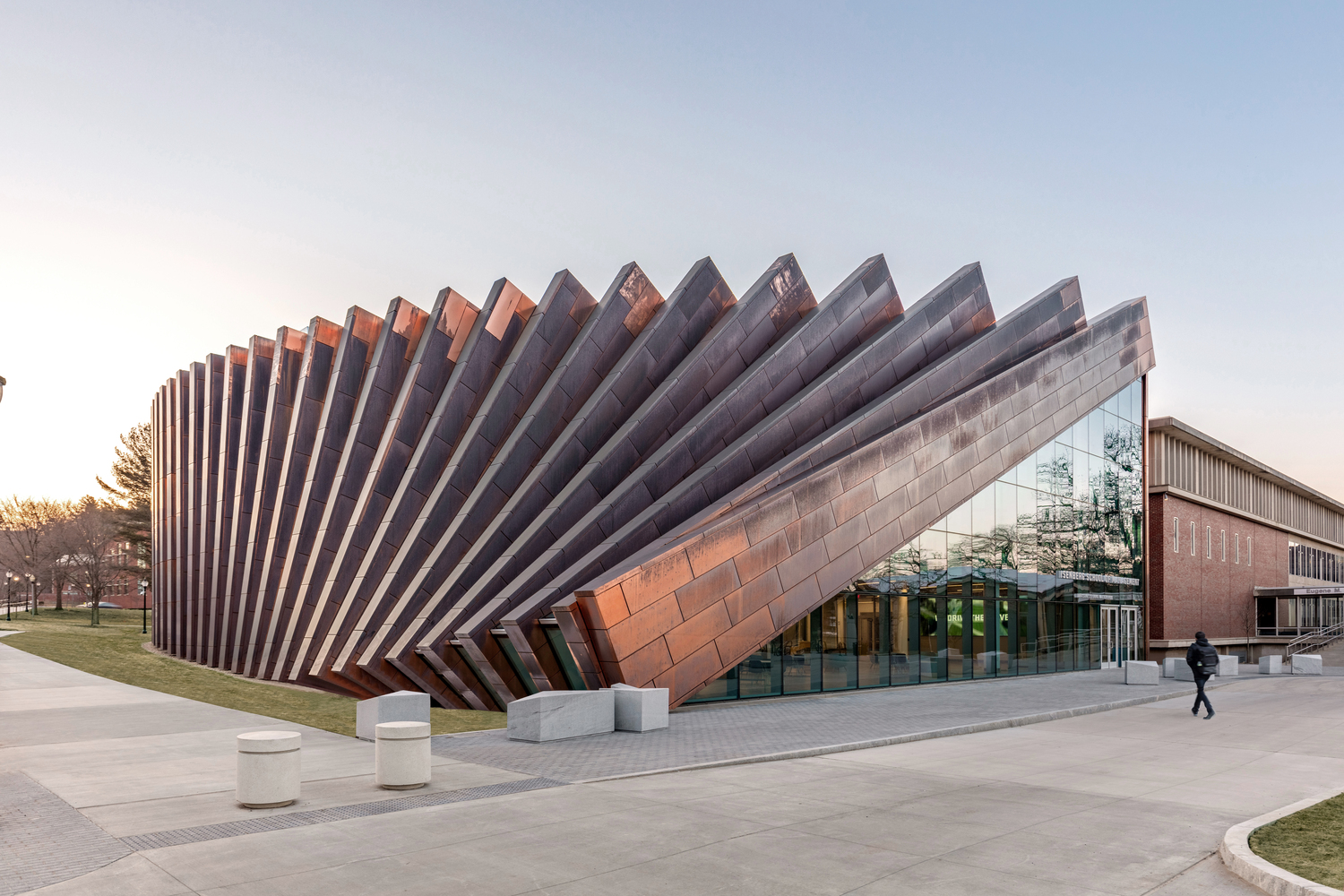
In the new age where parametric architecture and computational design methods are seeing rapid inclusivity, the blend of stone architecture in this phenomenon is also catching the global eye. The core reason behind it is the dynamic forms this blend can achieve.
Parametric architecture is taking deep roots as a congruence of advancing technology and architectural development. Combining efficiency with aesthetics, this form of design accelerates complex ideas by increasing the potential of detailing with finesse. Despite this stone as a material is not often chosen as a primary while ideating a design with a parametric backhand. This is mainly because parametric as a concept leans more towards curves and undulations which can be executed well with flexible materials.
On the contrary, the stone is considered to be heavy and robust in nature. Although it has been a primary material since historic times for a diverse range of building constructions, right from the Greek columns to the Parthenon. The exclusivity and versatility of stone architecture over the years has impacted modern architecture in many ways. The use of stone in the 21st century has evolved, making it one of the most iconic materials to use in the new age. Let us look at some of the iconic parametric projects that are made from stone.
Learn more about parametric and computational design from pioneers at the CD NEXT conference series:
1. Softstone by SETUP Architecture
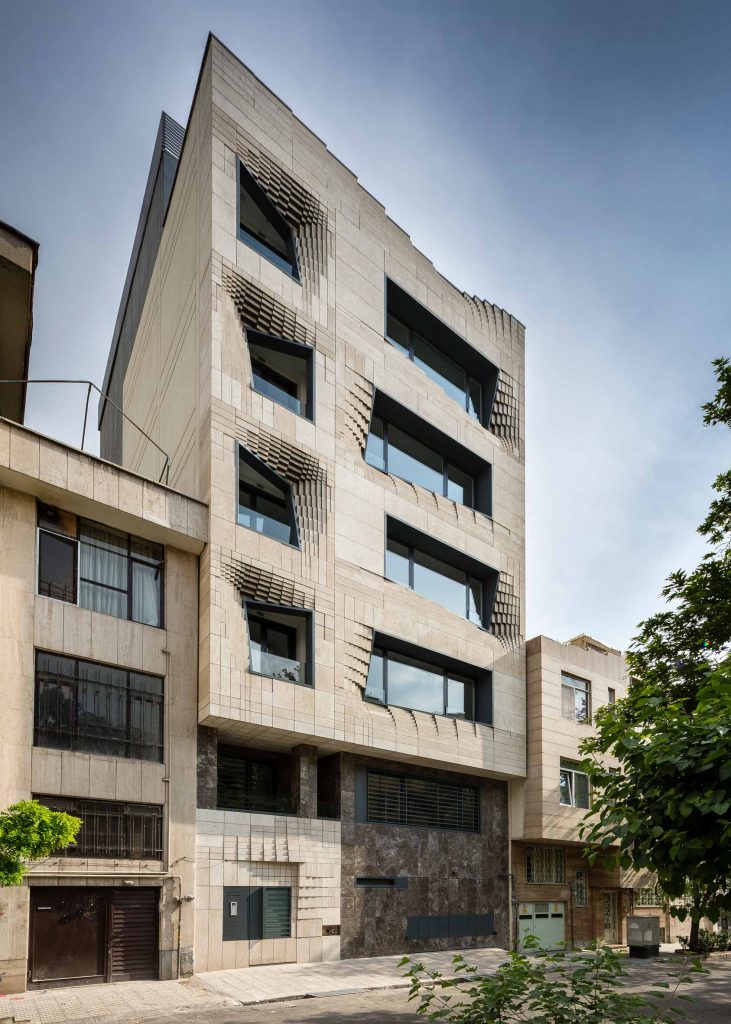
Location: Tehran, Iran
Located in the city centre of a metropolitan region is a spectacular example of an office project built with local stone. This mid-rise office building creates curved surfaces out of hardstone by providing smooth transitions from small to large components.

The focal points of these undulations direct the eye towards the skyline, highlight the entrance and the openings and connect the landscape to the staircase continuing up to the rooftop.

The connection of the backyard landscape to the rooftop with the staircase rates the effect of a carpet-like facade that enfolds the only existing tree. Minor deviations in the hand-cut stones are compensated by increased accuracy in the machine-cut and folded metal plates. The integration of stone components of varying sizes enables the use of material leftovers and discretizes the analogous surface. Computational technology enabled the designing of the structure as a volume rather than two-dimensional facades.

2. One Kleomenous by Omniview

Location: Athens, Greece
The facade of One Kleomenous is a thoroughly fascinating paragon of digital fabrication that introduces new solutions to the use of a stone-like marble as a facade material.
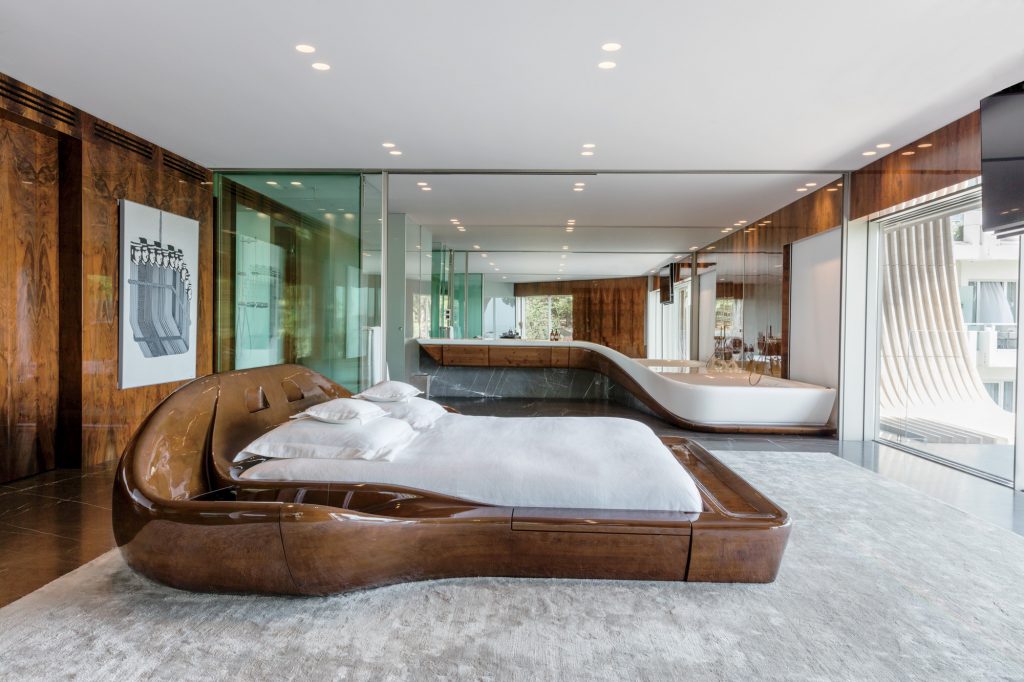
Its segmented surface is composed of 2290 slices of CNC-cut marble whose forms were designed by calculations through CAD/CAM applications.

“We liked the idea of showcasing the new geometric possibilities for the marble façade in the modern era,” says the head architect Dimitri Tsigos, bringing the focus onto the firm’s wish to expand the limits of marble.
He continues, “This intention was strengthened by the need to provide the building with a natural look and feel, as it is situated on the very frontier of the urban volume towards the forest.”

The facade’s topographical character is further enhanced by the shadows cast by the slender slices of marble, creating a fluidic yet discreet appearance with stone architecture.
3. Hypar Vault for SNBR by New Fundamentals Research Group

The New Fundamentals Research Group, an Italy based company designed a 1:1 scaled prototype for an experimental barrel-vaulted stone structure for the French Company SNBR. This company specializes in cutting-edge stone technology and construction.
Named as Hypar Vault, the structure has two types of pre-fabricated modules – a mirror image of the other based on the hyperbolic paraboloid. It has a doubly ruled surface.

It is constructed from a zero wasted stone. These modules were cut out of huge French limestone blocks with the use of wire-cutting machinery with the help of a robotic arm. The intention of this prototype was to establish innovative connections in spaces, shapes and the world of fabrications. The core design intent was to develop a self-supporting vaulted structure that is integrated with parametric analytics.
4. Mahallat Residential Building No3 by CAAT Studio

Location: Mallahat, Iran
The Mahallat Residential Building expresses the use of stone on the facade using a unique language of spatial variation. The location is close to local travertine mines that reduced transportation costs and enabled the use of a material that responds to the context and is environmentally friendly.


The interior has an open plan concept allowing the spaces to be tied together through material and views from the windows. The angled windows due to the undulating surfaces provide differing views from openings on the same facade.

The undulating structure of the facade eradicated the monotony and opened the facade to allow picturesque views while indoors. This in turn proved to be an advantage in providing ample light and ventilation while being aesthetically driven.
5. Guangzhou Opera House by Zaha Hadid Architects

Location: Guangzhou, China
Located at the heart of Guangzhou’s cultural development and on the bank of the Pearl River, the design of the Opera House by Zaha Hadid resembles two pebbles on the river bank through its twin-boulder design.
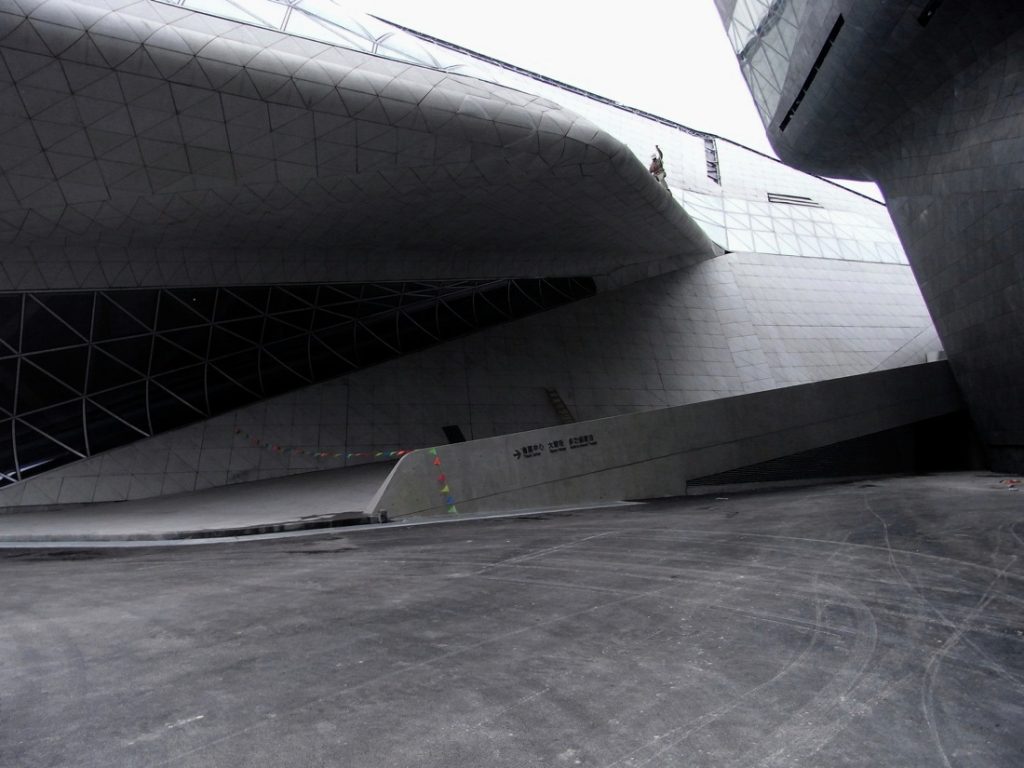
The grey granite volume is the larger of the two and contains the opera house that seats 1800 people. The smaller volume houses a black box theatre that connects to its exterior by the use of exposed black granite.

The monotony of exposed granite is interrupted by fixed glazing that creates openings for natural light into the massive building. This glazing then glimmers in the interior spaces due to the reflected light from the pearl river. As a result, it creates a mystical indoor space that acts as an ideal setting for an Opera.

The wielding of parametric design enabled the architectural transformation of natural pebbles found on the banks of a river to turn into an iconic and timeless material for an institutional building.
6. KAFD Grand Mosque by Omrania

Location – Riyadh, SA
Considered as an iconic landmark within a sea of skyscrapers, the KAFD Grand Mosque is a spiritual centre of the entire master plan. It is envisioned to serve as the Juma’ah (Friday) mosque for the visitors as well as the residents of the mixed-use financial district of Riyadh. Located within a sea of high-rise buildings, this structure breaks the monotony and lays close to the ground with a humane form inspired by a desert flower.


The naturally occurring sand crystal “desert rose” became the inspiration for this thought-provoking geometry. Refined to respond to the harsh climate of Riyadh, it was then put through parametric codes to create a uni-volumetric experience throughout. The stone facade was tessellated and served to resemble the dunes of the desert. The use of stone emphasized the ruggedness of the structure that blended well with the context and the deserts in the region.

“Instead of thinking of the mosque only as of the place where people go five times a day to perform the daily prayers, we thought of it as the main plaza of the city, a true part of the community. It would be a bold project in an increasingly important city”, expressed the firm.

The form induces a dynamic perspective that seems to change with the location of the sun and exterior lighting. The structure includes two sculpted minarets each 60 meters tall. The mosque is envisioned to be a multi-levelled public plaza that acts as a centre with over 1466 prayer spaces. The use of glass muqarnas along with calligraphic patterns and varied other details provides a pedestal for contemporary use of geometry as well as ornamentation in Islamic Architecture.
7. Store Street by Taha, Pierre Bidaud and engineer Steve Webb

Location: London, UK
A huge structure raised on triangular wooden props has the look of a medieval battering ram on the Tottenham Court Road. It has a structural stone floor 12 meters long and a few centimetres thick slender pieces. These pieces are cut straight from the quarry and installed on site. It is also a sustainable structure with over a carbon footprint of just 15%.
“Stone,” says architect Amin Taha, “is the great forgotten material of our time. In 99% of cases, it’s cheaper and greener to use stone in a structural way, as opposed to concrete or steel, but we mostly just think of using it for cladding.”
This exhibition at the building centre aims to reveal the potential of the primal material. He quotes it to be the New Stone Age. “We wanted to prove that a solid stone tower is eminently possible,” says Taha
8. Mausoleum of Omar Khayyam
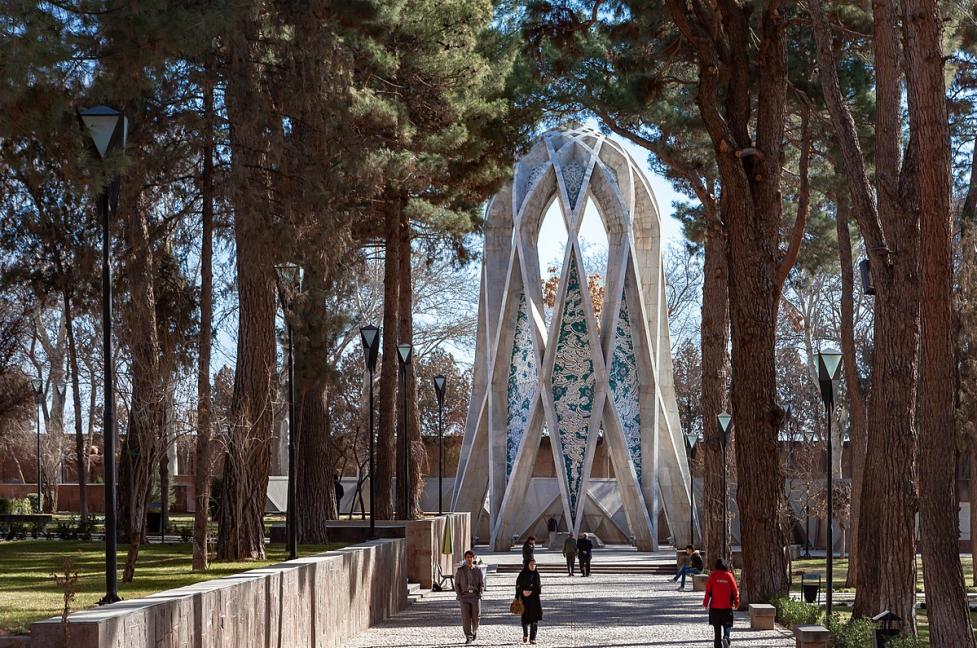
Location: Neyshabur, Iran
Neyshabur is a city where many tourists still visit to see the relics of the period in the fifth century AD. Hakim Omar Khayyam is a prominent scientist and poet, this tomb was constructed in 1341. While designing this tomb – the design was inspired by mathematics, poetry and astronomy.
The building blades are designed by quatrains of Khayyam which have been written on the suspension line. Neyshabur Turquoise stone has been used. The reconstruction of this mausoleum was commissioned by the Iranian Government in 1334. The white marble monument is designed by Hooshan Seyhoun and was completed in the year 1963.
9. Stone Matters by AAU ANASTAS

Location: West Bank, Palestine
In Palestine, the know-how of stone is disappearing. Therefore this research project aims to include the various processes of cutting stone and construction to create a contemporary form of architecture with it. “Our research focuses on investigating the capacity of using stone as a structural material. Through the understanding of our historical cities, the research tries to link techniques of construction to urban morphologies … The idea is to suggest new urban morphologies linked to the scientific use of largely available material in Palestine,” Yousef said.

The use of computational simulation and fabrication techniques allowed this modern stone structure to be built. This local material intends to follow a global language.

“In Palestine, we have a majority of limestone that is of good mechanical characteristics that we try to integrate into the process of design. All this leads to a change of shapes linked to the use of the material and the inclusion of stone in a contemporary architectural language,” co-designer, Yousef Anastas.
The Mystique that is Stone…..
Stone as a material has its own mystical charm and grandeur that has managed to outlast time since history. Be it the Columns at Acropolis or the Minarets of the Tajmahal, the Stonehenge or the Eqyptian Pyramids, stone has provided a chronology of diverse architecture that remains intact with its beauty. Right from being used as a convenience to a symbol, stone has had quite a journey over these years. Even now in a digitalized and futurist age, stone as a building material continues to awestruck us through these thought-provoking architectural forms.
Stone with parametric design methods is an iconic blend of the old and the new. Through this, it creates forms that can be termed as ‘futurist yet timeless’.



































